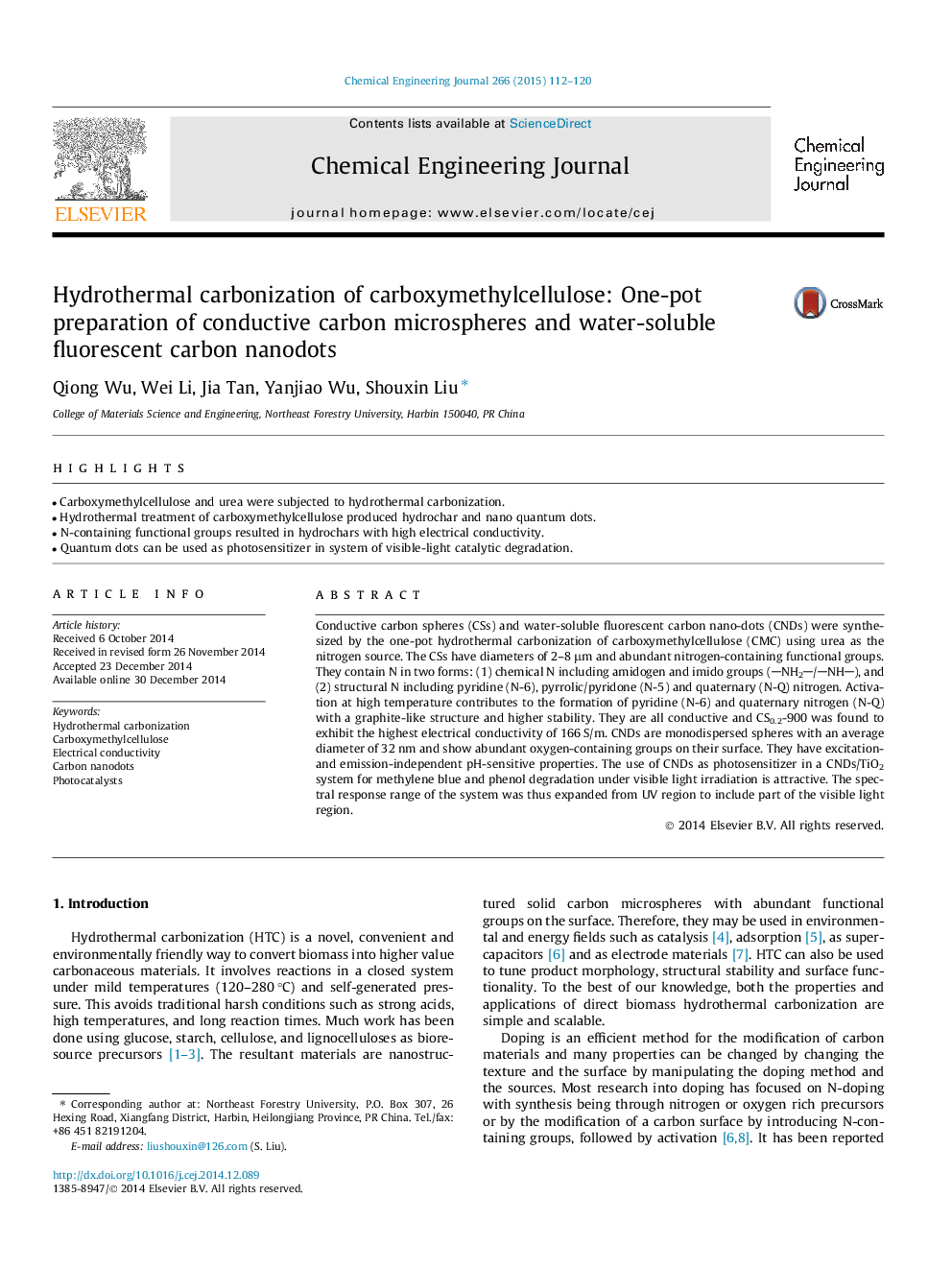| Article ID | Journal | Published Year | Pages | File Type |
|---|---|---|---|---|
| 6585188 | Chemical Engineering Journal | 2015 | 9 Pages |
Abstract
Conductive carbon spheres (CSs) and water-soluble fluorescent carbon nano-dots (CNDs) were synthesized by the one-pot hydrothermal carbonization of carboxymethylcellulose (CMC) using urea as the nitrogen source. The CSs have diameters of 2-8 μm and abundant nitrogen-containing functional groups. They contain N in two forms: (1) chemical N including amidogen and imido groups (NH2/NH), and (2) structural N including pyridine (N-6), pyrrolic/pyridone (N-5) and quaternary (N-Q) nitrogen. Activation at high temperature contributes to the formation of pyridine (N-6) and quaternary nitrogen (N-Q) with a graphite-like structure and higher stability. They are all conductive and CS0.2-900 was found to exhibit the highest electrical conductivity of 166 S/m. CNDs are monodispersed spheres with an average diameter of 32 nm and show abundant oxygen-containing groups on their surface. They have excitation- and emission-independent pH-sensitive properties. The use of CNDs as photosensitizer in a CNDs/TiO2 system for methylene blue and phenol degradation under visible light irradiation is attractive. The spectral response range of the system was thus expanded from UV region to include part of the visible light region.
Keywords
Related Topics
Physical Sciences and Engineering
Chemical Engineering
Chemical Engineering (General)
Authors
Qiong Wu, Wei Li, Jia Tan, Yanjiao Wu, Shouxin Liu,
